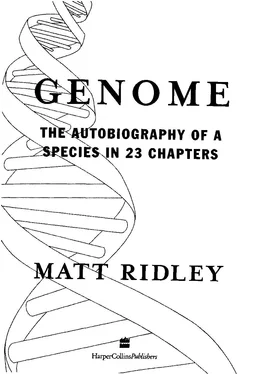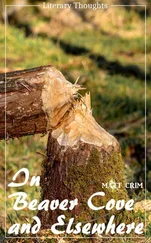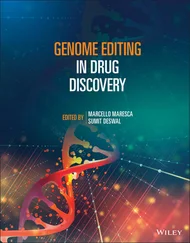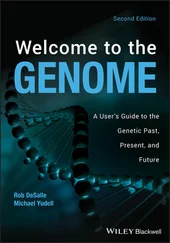Genome - Matt Ridley
Здесь есть возможность читать онлайн «Genome - Matt Ridley» — ознакомительный отрывок электронной книги совершенно бесплатно, а после прочтения отрывка купить полную версию. В некоторых случаях можно слушать аудио, скачать через торрент в формате fb2 и присутствует краткое содержание. Жанр: Старинная литература, на английском языке. Описание произведения, (предисловие) а так же отзывы посетителей доступны на портале библиотеки ЛибКат.
- Название:Matt Ridley
- Автор:
- Жанр:
- Год:неизвестен
- ISBN:нет данных
- Рейтинг книги:5 / 5. Голосов: 1
-
Избранное:Добавить в избранное
- Отзывы:
-
Ваша оценка:
- 100
- 1
- 2
- 3
- 4
- 5
Matt Ridley: краткое содержание, описание и аннотация
Предлагаем к чтению аннотацию, описание, краткое содержание или предисловие (зависит от того, что написал сам автор книги «Matt Ridley»). Если вы не нашли необходимую информацию о книге — напишите в комментариях, мы постараемся отыскать её.
Matt Ridley — читать онлайн ознакомительный отрывок
Ниже представлен текст книги, разбитый по страницам. Система сохранения места последней прочитанной страницы, позволяет с удобством читать онлайн бесплатно книгу «Matt Ridley», без необходимости каждый раз заново искать на чём Вы остановились. Поставьте закладку, и сможете в любой момент перейти на страницу, на которой закончили чтение.
Интервал:
Закладка:
C H R O M O S O M E 9
Randy Nesse and George Williams's Evolution and healing (Weidenfeld and Nicolson, 1995) is the best introduction to Darwinian medicine and the interplay between genes and pathogens.
1. Crow, J. F. (1993). Felix Bernstein and the first human marker locus.
Genetics 133: 4—7.
2. Yamomoto, F., Clausen, H., White, T., Marken, S. and Hakomori, S.
(1990). Molecular genetic basis of the histo-blood group ABO system. Nature 345: 229-33.
3. Dean, A. M. (1998). The molecular anatomy of an ancient adaptive event.
American Scientist 86: 26—37.
4. Gilbert, S. C, Plebanski, M., Gupta, S., Morris, J., Cox, M., Aidoo, M., Kwiatowski, D., Greenwood, B. M., Whittle, H. C. and Hill, A. V. S. (1998).
Association of malaria parasite population structure, HLA and immunological antagonism. Science 279: 1173-7; also A Hill, personal communication.
5. Pier, G. B. et al. (1998). Salmonella typhi uses CFTR to enter intestinal epithelial cells. Nature 393: 79—82.
6. Hill, A. V. S. (1996). Genetics of infectious disease resistance. Current Opinion in Genetics and Development 6: 348—53.
7. Ridley, M. (1997). Disease. Phoenix, London.
8. Cavalli-Sforza, L. L. and Cavalli-Sforza, F. (1995). The great human diasporas.
Addison Wesley, Reading, Massachusetts.
9. Wederkind, C. and Furi, S. (1997). Body odour preferences in men and women: do they aim for specific MHC combinations or simple hetero-geneity? Proceedings of the Royal Society of London, Series B 264: 1471-9.
10. Hamilton, W. D. (1990). Memes of Haldane and Jayakar in a theory of sex. Journal of Genetics 69: 17—32.
3 2 6 G E N O M E
C H R O M O S O M E 1 0
The tricky subject of psychoneuroimmunology is explored by Paul Martin's The sickening mind (Harper Collins, 1997).
1. Martin, P. (1997)- The sickening mind: brain, behaviour, immunity and disease.
Harper Collins, London.
2. Becker, J. B., Breedlove, M. S. and Crews, D. (1992). Behavioral endocrinology.
MIT Press, Cambridge, Massachusetts.
3. Marmot, M. G., Davey Smith, G., Stansfield, S., Patel, C, North, F. and Head, J. (1991). Health inequalities among British civil servants: the Whitehall II study. Lancet 337: 1387—93.
4. Sapolsky, R. M. (1997). The trouble with testosterone and other essays on the biology of the human predicament. Touchstone Press, New York.
5. Folstad, I. and Karter, A. J. (1992). Parasites, bright males and the immunocompetence handicap. American Naturalist 139: 603—22.
6. Zuk, M. (1992). The role of parasites in sexual selection: current evidence and future directions. Advances in the Study of Behavior 21: 39—68.
C H R O M O S O M E I I
Dean Hamer has both done the research and written the books on personality genetics and the search for genetic markers that correlate with personality differences. His book, with Peter Copeland, is Living with our genes (Doubleday, 1998).
1. Hamer, D. and Copeland, P. (1998). Living with our genes. Doubleday, New York.
2. Efran, J. S., Greene, M. A. and Gordon, D. E. (1998). Lessons of the new genetics. Family Therapy Networker 22 (March/April 1998): 26—41.
3. Kagan, J. (1994). Galen's prophecy: temperament in human nature. Basic Books, New York.
4. Wurtman, R.J. and Wurtman,J. J. (1994). Carbohydrates and depression.
In Masters, R. D. and McGuire, M. T. (eds), The neurotransmitter revolution, pp.96-109. Southern Illinois University Press, Carbondale and Edwardsville.
B I B L I O G R A P H Y A N D N O T E S 3 2 7
5. Kaplan, J. R., Fontenot, M. B., Manuck, S. B. and Muldoon, M. F. (1996).
Influence of dietary lipids on agonistic and affiliative behavior in Macaca fascicularis. American Journal of Primatology 38: 333 —47.
6. Raleigh, M. J. and McGuire, M. T. (1994). Serotonin, aggression and violence in vervet monkeys. In Masters, R. D. and McGuire, M. T. (eds), The neurotransmitter revolution, pp. 129-45. Southern Illinois University Press, Carbondale and Edwardsville.
C H R O M O S O M E 1 2
The story of homeotic genes and the way in which they have opened up the study of embryology is told in two recent textbooks: Principles of development by Lewis Wolpert (with Rosa Beddington, Jeremy Brockes, Thomas Jessell, Peter Lawrence and Elliot Meyerowitz) (Oxford University Press, 1998), and Cells, embryos and evolution by John Gerhart and Marc Kirschner (
Blackwell, 1997).
1. Bateson, W. (1894). Materials for the study of variation. Macmillan, London.
2. Tautz, D. and Schmid, K.J. (1998). From genes to individuals: developmental genes and the generation of the phenotype. Philosophical Transactions of the Royal Society of London, Series B 353: 231—40.
3. Niisslein-Volhard, C. and Wieschaus, E. (1980). Mutations affecting segment number and polarity in Drosophila. Nature 287: 795—801.
4. McGinnis, W., Garber, R. L., Wirz, J., Kuriowa, A. and Gehring, W. J.
(1984). A homologous protein coding sequence in Drosophila homeotic genes and its conservation in other metazoans. Cell 37: 403—8; Scott, M. and Weiner, A.J. (1984). Structural relationships among genes that control development: sequence homology between the Antennapedia, Ultrabithorax and fushi tarazu loci of Drosophila. Proceedings of the National Academy of Sciences of the USA 81: 4115-9.
5. Arendt, D. and Nubler-Jung, K. (1994). Inversion of the dorso-ventral axis? Nature 371: 26.
6. Sharman, A. C. and Brand, M. (1998). Evolution and homology of the nervous system: cross-phylum rescues of otd/Otx genes. Trends in Genetics 14: 211 —14.
7. Duboule, D. (1995). Vertebrate hox genes and proliferation — an alternative 3 2 8 G E N O M E
pathway to homeosis. Current Opinion in Genetics and Development 5: 525—8; Krumlauf, R. (1995). Hoxgenes invertebrate development. Cell 78: 191—201.
8. Zimmer, C. (1998). At the water's edge. Free Press, New York.
C H R O M O S O M E I 3
The geography of genes is explored in Luigi Luca Cavalli-Sforza and Fran-cesco Cavalli-Sforza's The great human diasporas (Addison Wesley, 1995); some of the same material is also covered in Jared Diamond's Guns, germs and steel (Jonathan Cape, 1997).
1. Cavalli-Sforza, L. (1998). The DNA revolution in population genetics.
Trends in Genetics 14: 60—65.
2. Intriguingly, the genetic evidence generally points to a far more rapid migration rate for women's genes than men's (comparing maternally inherited mitochondria with paternally inherited Y chromosomes) — perhaps eight times as high. This is partly because in human beings, as in other apes, it is generally females that leave, or are abducted from, their native group when they mate.
Jensen, M. (1998). All about Adam. New Scientist, 11 July 1998: 35—9.
3. Reported in HMS Beagle: The Biomednet Magazine (www.biomednet.com/
hmsbeagle), issue 20, November 1997.
4. Holden, C. and Mace, R. (1997). Phylogenetic analysis of the evolution of lactose digestion in adults. Human Biology 69: 605—28.
C H R O M O S O M E I 4
Two good books on ageing are Steven Austad's Why we age (John Wiley and Sons, 1997) and Tom Kirkwood's Time of our lives (Weidenfeld and Nicolson, 1999).
1. Slagboom, P. E., Droog, S. and Boomsma, D. I. (1994). Genetic determination of telomere size in humans: a twin study of three age groups. American Journal of Human Genetics 55: 876—82.
Читать дальшеИнтервал:
Закладка:
Похожие книги на «Matt Ridley»
Представляем Вашему вниманию похожие книги на «Matt Ridley» списком для выбора. Мы отобрали схожую по названию и смыслу литературу в надежде предоставить читателям больше вариантов отыскать новые, интересные, ещё непрочитанные произведения.
Обсуждение, отзывы о книге «Matt Ridley» и просто собственные мнения читателей. Оставьте ваши комментарии, напишите, что Вы думаете о произведении, его смысле или главных героях. Укажите что конкретно понравилось, а что нет, и почему Вы так считаете.












